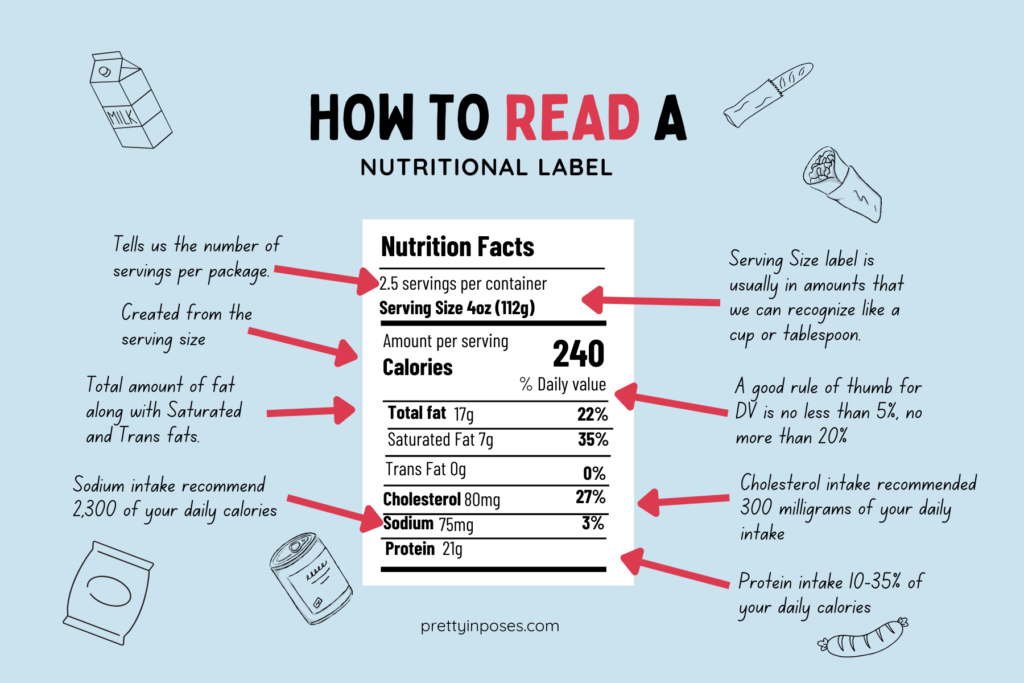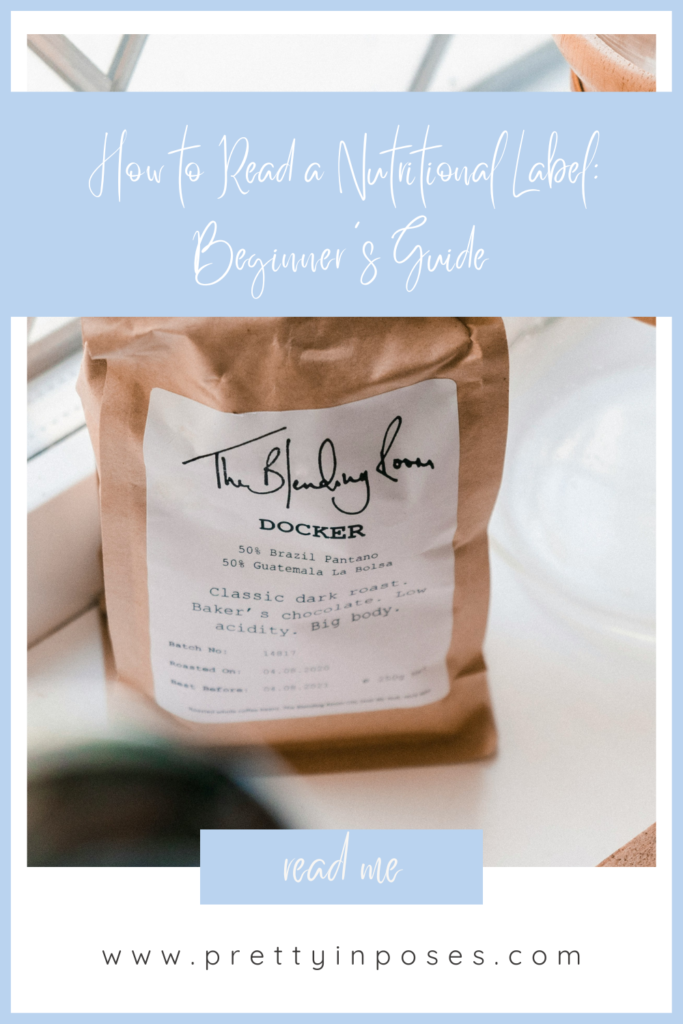We’ve all plucked a salty or sweet snack off the grocery store shelf, barely noticing its name, let alone the nutritional info on the back.
These labels often get overlooked or misunderstood, yet they carry vital information about the nutritional content, ingredients, and calorie count.
In this post, you’ll learn all about how to read a nutritional label and the best ways to use this knowledge to get the most out of your daily nutrition.
What is a Nutritional Label?
Nutritional labels are filled with a lot of details and numbers, which can feel confusing and a bit like math.
However, understanding what you’re eating is paramount to maintaining your overall health.
Nutrition labels are summaries made by the Food and Drug Administration (FDA) that showcase dietary facts on food products.
They’re a necessary part of consumer transparency and comply with national public health regulations.
Here are some details you will find on a nutritional label.
Serving Per Container: This indicates the number of servings per package.
For example, if a box of ramen noodles states there are 4 servings on the label, it means there are four meals in the box.
This is especially useful for families or those planning meals for the week.
Serving Size: Usually expressed in recognizable amounts like cups or tablespoons.
Contrary to popular belief, this is not a recommended serving size but a reflection of what an average consumer eats.
If the serving size is 1 cup of popcorn and you eat half that portion, you can calculate the calories consumed based on the nutritional serving size.
Calorie Count: Based on the serving size, this helps consumers understand how many calories they will be eating.
This is crucial for those on specific diet plans or looking to reduce calorie intake.
Understanding Information on Nutritional Labels
Now that we know the basics, let’s dive further into the information found on these labels, particularly macronutrients.
Macronutrients are nutrients our bodies need in large quantities to provide energy.
They include fats, proteins, and carbohydrates, which are essential for maintaining a balanced diet and managing weight
Fats: Provide energy and support cell growth. Though important they should be consumed in the right amounts to avoid health risks.
Proteins: Help build and repair tissues. They are essential for muscle growth and overall body function.
Carbohydrates: Are the main source of energy for the body. They’re found in foods like bread, pasta, and fruits.
The percentages next to these nutrients on the nutritional label show how much of each you get per serving.
For example, if the label says the food provides 10% of your daily fat needs, you still need 90% from other sources.
Daily Value (DV): This helps you understand if you’re getting enough nutrients. A good rule of thumb is:
- Less than 5% DV means the nutrient is low.
- More than 20% DV means the nutrient is high.
Other Nutrients to Watch
- Cholesterol: Necessary for producing important components in our bodies, but too much can be harmful. High cholesterol content is often found in foods high in saturated fats.
- Sodium: Common in many foods, but high concentrations can lead to health issues. Monitoring sodium intake is crucial for good health.
- Dietary Fiber: Found in whole grains, fruits, and vegetables, as well as preprocessed foods. Fiber aids digestion and lowers blood sugar and cholesterol. Aim for 25 to 30 grams a day.
Sugar Total and Added Sugars: Naturally occurring sugars and those added for flavor or preservation. Monitoring sugar intake is important for overall health.

Dietary Guidelines for Americans
The Dietary Guidelines for Americans recommend a percentage of intake for the amount of calories you eat a day.
Macronutrient Recommendations:
- Protein: 10-35%
- Carbohydrates: 45-65%
- Fat: 25-35%
- Sugar: Less than 10%
Sodium and Cholesterol:
- Sodium: 2,300 milligrams
- Cholesterol: 300 milligrams
Your Beginner’s Guide to Nutritional Labels
Hopefully, you have a better understanding of how to read a nutritional label.
Whether indulging in a tasty treat or watching your calorie intake, paying attention to the information on the back of your products is essential.
It helps you track your food intake, comprehend macronutrients, and ensure you are not consuming too much of certain nutrients.
If you have any questions or comments, be sure to leave them down below. Or send a message through the contact page and… happy label checking…? I guess.

Guest Post

Brittany Strong has an associate degree in communications and is an engineering major at Florida Atlantic University. When she’s not in school developing apps, you can find Brittany playing with her Morkie Terrier or digging into a classic fiction novel.
Special Thanks
Photo by Dan Smedley on Unsplash






Leave a Reply